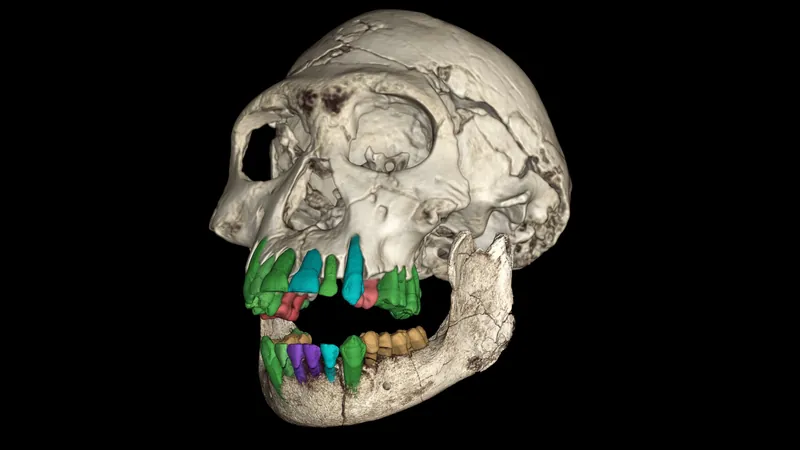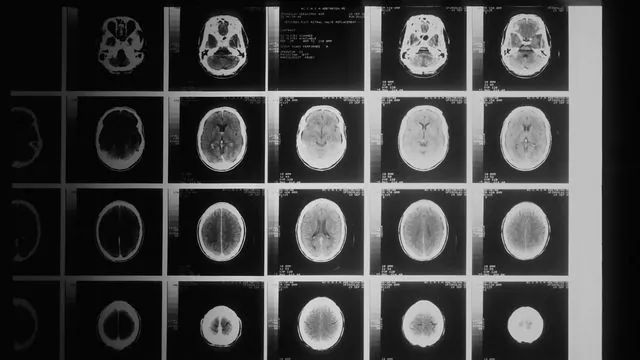
Revolutionary Discoveries from Fossil Teeth Rewrite Human Evolution Narrative
2024-11-13
Author: Jia
The Importance of Childhood in Human Evolution
Humans are unique among great apes for their remarkably prolonged childhoods, during which they rely heavily on adults for education and sustenance. This lengthy phase is crucial for acquiring the essential cognitive skills needed for navigating the complexities of human society. The prevailing theory has posited that the increase in brain size necessitated longer development periods, assuming that a larger brain was the driving force behind this extended childhood.
However, the new study published in Nature shifts this paradigm, shedding light on the intricate relationship between dental growth patterns and cognitive development. This research stems from the examination of a remarkably preserved fossil of early Homo discovered at the Dmanisi archaeological site in Georgia, that dates back 1.77 million years.
Teeth: The Gateway to Growth Insights
The collaborative team—comprising experts from the University of Zurich, the European Synchrotron Radiation Facility (ESRF) in France, and the Georgian National Museum—utilized synchrotron imaging technologies to delve into the microstructure of the fossil's teeth. As explained by Christoph Zollikofer, a lead researcher from the University of Zurich, "Teeth, much like trees, exhibit growth rings that allow us to unveil crucial developmental stages, providing insights into the individual's life cycle."
This extensive research spanned almost two decades, beginning with initial scans in 2006. By 2023, results indicated that the fossil belonged to an individual who lived approximately between the ages of 11 and 12, showing unexpected rapid molar development. These findings revealed dental maturation indicative of longer childhoods.
Prolonged Childhood as an Evolutionary Strategy
The results showed a prolonged period during which these early humans retained their milk teeth, suggesting a longer dependency on adult care compared to great apes. Marcia Ponce de León, an integral part of the research team, remarked, "This could represent an early phase in the evolutionary experiment of prolonged childhood, characterized by a reliance on adult support for much longer than observed in other primates."
But the significance of these findings extends beyond physical growth; they imply a more complex social structure during early human development. The study suggests that older individuals played crucial roles in cultural transmission, sharing knowledge and experiences with younger members of their groups. This communal dynamic could have enhanced the survival of the species by optimizing resource use and encouraging the emergence of more sophisticated behaviors.
From Brain Size to Cultural Complexity
The research introduces a compelling new angle: rather than larger brains causing longer developmental periods, it posits that an extended childhood facilitated cultural learning, which, in turn, may have led to larger brains over time. David Lordkipanidze, a co-author, emphasized the importance of intergenerational support, noting that older members likely contributed to the transmission of valuable survival strategies, affirming the significance of the three-generation structure in human evolution.
In summation, the meticulous study of this fossil’s dental development shines a new light on the factors influencing human evolution. It challenges traditional narratives and encourages researchers to consider how environmental and social variables may have shaped our developmental journey. As scientists continue to unravel the ancient wisdom enshrined in these teeth, the story of human evolution grows ever more intricate and fascinating. This revolutionary study invites further exploration into the interplay between biology, culture, and the evolutionary success of our species, Homo sapiens.


 Brasil (PT)
Brasil (PT)
 Canada (EN)
Canada (EN)
 Chile (ES)
Chile (ES)
 España (ES)
España (ES)
 France (FR)
France (FR)
 Hong Kong (EN)
Hong Kong (EN)
 Italia (IT)
Italia (IT)
 日本 (JA)
日本 (JA)
 Magyarország (HU)
Magyarország (HU)
 Norge (NO)
Norge (NO)
 Polska (PL)
Polska (PL)
 Schweiz (DE)
Schweiz (DE)
 Singapore (EN)
Singapore (EN)
 Sverige (SV)
Sverige (SV)
 Suomi (FI)
Suomi (FI)
 Türkiye (TR)
Türkiye (TR)